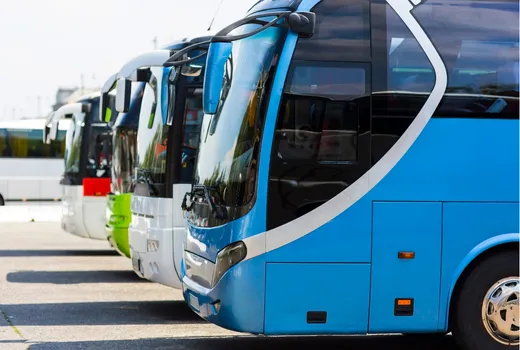Protecting Schools is Our Purpose!
Building Effective Campus Reunification Plans

FSDAVCFEBFEVSDDVFSD

FSDAVCFEBFEVSDDVFSD

FSDAVCFEBFEVSDDVFSD
Ensuring Safe, Swift Family Reunions
Identifying the Right Reunification Sites

Choosing a safe reunification site starts with logistics. Evaluate nearby options like churches, fairgrounds, or community centers for space, access, shelter, and emergency routes. The site should be close enough for quick transport but far enough to avoid active hazards. Confirm there’s safe entry, adequate parking, and space to stage both students and parents.
Accessibility is key—ensure the site supports students with disabilities, medical needs, or sensory sensitivities.
Partner early with site managers and draft written agreements. Clarify responsibilities around signage, restroom access, staff support, and communication protocols. During walkthroughs, designate areas for student holding, parent check-in, and staff operations.
Test cell reception or Wi-Fi and outline how teams will stay in contact. A well-prepared reunification site makes execution smoother, faster, and less stressful. Clear plans reduce confusion and promote calm when response time matters most.

Designing Clear, Efficient Release Protocols
Every reunification plan must include clear, step-by-step release procedures. Start with secure parent check-in stations where staff verify identification and confirm custody rights. Assign staff to welcome stations with printed rosters or digital devices that match parent names with student emergency contacts. Students should wait in quiet staging areas organized by teacher or grade level, supervised by familiar staff. Cross-check every match before release to prevent errors and confusion.
Manage traffic flow using color-coded signage and directional arrows. Clear signs pointing to check-in, staging, and exit zones reduce stress for families arriving at unfamiliar locations. Floor markings and barriers help maintain order. Consider using barcode scanners or mobile apps to confirm identities and streamline the verification process. These tools reduce wait times and offer audit trails if questions arise after the event.
Plan for complications. Have a process for parents without identification, guardians not listed on forms, or unreachable emergency contacts. Prepare staff with scripts and extra training to handle these exceptions calmly. Assign a reunification lead to oversee issues and maintain clear documentation throughout. Practice these steps during reunification drills. Testing the entire process under realistic conditions builds staff confidence and reveals gaps before a real emergency occurs.
Coordinating Transportation and Logistics

Transportation is a critical piece of any campus reunification plan. Collaborate closely with transportation directors early to identify safe rally points for buses, located away from first responder staging zones. Carefully map out primary routes and alternate exits to account for road closures, traffic, or weather-related obstacles. Flexibility is key during any emergency response.
Assign trained staff to manage loading and unloading zones. These staff members should verify student names, assist with seating, and help any students with mobility or medical needs. Designate floaters to address last-minute changes or help with crowd control. Having adults who know the students well improves accuracy and speeds up transitions.
Develop mutual-aid agreements with nearby districts to provide extra buses and drivers if needed. Keeping multiple backup transportation options available helps reduce delays and prevents bottlenecks during student transfers.
Transportation is a critical piece of any campus reunification plan. Collaborate closely with transportation directors early to identify safe rally points for buses, located away from first responder staging zones. Carefully map out primary routes and alternate exits to account for road closures, traffic, or weather-related obstacles. Flexibility is key during any emergency response.
Assign trained staff to manage loading and unloading zones. These staff members should verify student names, assist with seating, and help any students with mobility or medical needs. Designate floaters to address last-minute changes or help with crowd control. Having adults who know the students well improves accuracy and speeds up transitions.
Develop mutual-aid agreements with nearby districts to provide extra buses and drivers if needed. Keeping multiple backup transportation options available helps reduce delays and prevents bottlenecks during student transfers.

Set a clear timeline for developing the transportation annex of your campus reunification plan. Start with driver briefings that outline expectations, communication channels, and chain-of-command protocols. Follow up with walkthroughs of staging areas so drivers know exactly where to go. Conduct tabletop exercises with administrators and safety teams to rehearse responses to scenarios involving multiple buses, delayed pickups, or detoured routes.
Schedule yearly updates to your transportation annex. As neighborhoods expand or roadways change, route maps and bus schedules must reflect new realities. Include local construction updates and alternate path planning in each review. Secure agreements with third-party transportation providers to cover potential shortages of vehicles or drivers. Confirm those providers understand your reunification procedures in advance. These detailed plans reduce chaos during a crisis and prevent delays in student reunification. When transportation logistics are practiced, predictable, and well-staffed, families get reconnected faster—and with less confusion or stress.
Training Staff, Students, and Families
Reunification drills should be scheduled at least once a year. Begin by training staff on their specific duties using printed checklists and short video demonstrations. Make sure each staff member understands where they need to be, what forms they are responsible for, and how to manage student movements. Role clarity prevents confusion and improves execution during high-stress situations. Walk students through the reunification process using age-appropriate language and steady pacing. Help them understand that drills are for practice—not because something is wrong.
Use short, clear videos to explain the process to families. Show visuals of the reunification site, entry points, and how parents will check in. Explain what forms of ID to bring and what to expect during the wait. Translate all materials into the primary languages spoken in your school community. This ensures every family knows what to do.
After each drill, log key metrics. Time the student release process, track average parent wait times, and gather staff input on what worked and what didn’t. Review how well communication was delivered and received. Use this feedback to refine the plan. Frequent practice and honest assessments allow schools to improve their campus reunification plans before a real emergency occurs.
Communicating Clearly During a Crisis
Crisis communication starts with clear, timely updates. Use a combination of notification apps, SMS texts, emails, social media, and radio alerts to reach families quickly. Every message should include who is affected, what is happening, where families should go, and when to act. Consistent formatting and plain language reduce confusion during high-stress moments.
Appoint a trained public information officer (PIO) to manage all outgoing communication. This person monitors for misinformation, coordinates with district leadership, provides real-time updates, and serves as the point of contact for local media. A central voice helps control the narrative and keeps families informed.
Use calm, reassuring language in all messages. Let families know that students are safe, explain the reunification process, and outline what identification or documents they’ll need. Practice communications beforehand to prevent panic. Well-prepared communication builds trust in emergencies.

Prepare message templates ahead of time to avoid scrambling during a crisis. Prewritten alerts allow you to act quickly without sacrificing clarity. Include fields for location, times, and contact numbers so staff can easily customize each notice. Add visuals whenever possible—maps showing pickup zones, icon-based checklists, and simple diagrams often communicate faster than text, especially for families under stress or with language barriers. Graphics also help younger students and non-readers follow instructions confidently.
Set up a reunification call center for families needing extra assistance. Staff this line with trained volunteers who can access live updates and answer questions calmly. Some parents may miss the initial alert or need help locating the reunification site. Others may have transportation concerns or unique custody situations requiring verification. Keep the call center open until all students have been released and accounted for. Having a reliable phone line reassures families and reduces panic at the scene.
Auditing and Improving the Plan Annually
After each drill or actual emergency, schedule an after-action review within a few days. Bring together staff from all involved roles—teachers, transportation, security, and administration—along with any outside partners such as law enforcement or EMS. Ask each group to describe what worked well and where breakdowns occurred. Document timelines, communication gaps, and unexpected delays so that specific adjustments can be made. Keep the focus constructive, practical, and solution-oriented for long-term improvement.
Distribute anonymous surveys to staff and families. Ask staff if they felt prepared, supported, and understood their responsibilities. Request feedback from parents about clarity, wait times, and whether instructions were easy to follow. Look for patterns in responses—confusion over pickup areas, unclear maps, or gaps in translation services. Use this input to revise training materials, update signage, or improve notification wording for future use and stronger outcomes.
Track performance over time. Compare drill outcomes from one year to the next. Publish metrics like faster student release times or increased parent satisfaction in school newsletters, reports, or board presentations. Share these improvements with your broader school community. Publicizing consistent progress not only strengthens trust—it shows that reunification planning is ongoing, responsive, and driven by real results.
Have Questions About What We Offer?
To learn more about our services, contact us today!
Have Questions About What We Offer?
Contact us to learn more about our services
Quick Links
Hours of Operation
Mon - Fri | 9:00 AM - 5:00 PM
Sat - Sun | Closed

©2025 American Priority Project | All Rights Reserved | Privacy Policy

